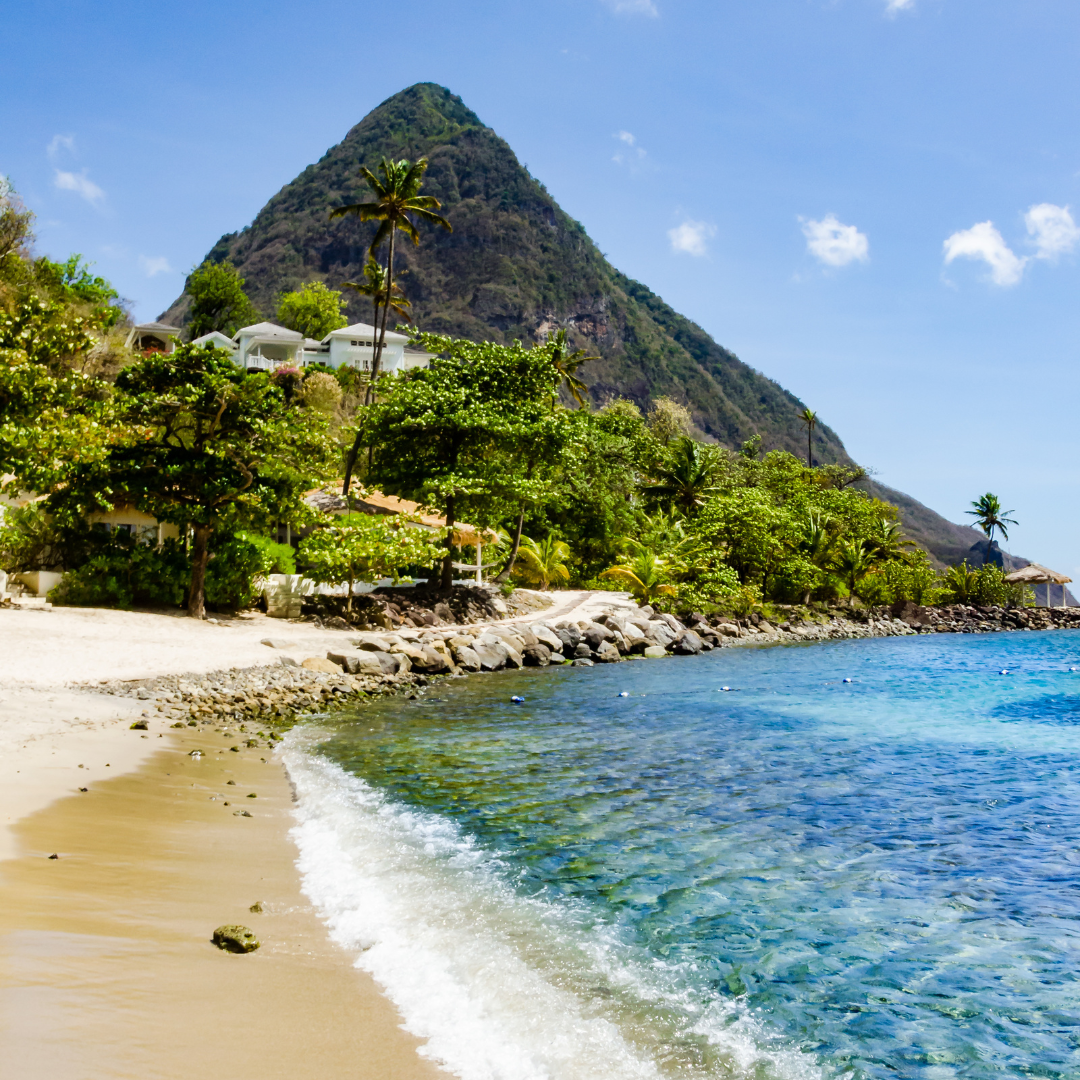Sailing the Caribbean Waters: Exploring Saint Lucia’s Stunning Coastline

The Caribbean, with its shimmering azure waters and sun-kissed islands, has long captured the imagination of travelers, explorers, and dreamers. Among its gems, Saint Lucia stands out with its mesmerizing coastline, rich history, and vibrant culture. Sailing along this picturesque island, one is transported into a world where nature’s grandeur melds seamlessly with human artistry. This voyage is not just about navigating the waves but discovering the soul of an island.
Northern Charms: Rodney Bay and Pigeon Island
Nestled on the northwestern tip of Saint Lucia, Rodney Bay is a captivating blend of modernity and untouched Caribbean beauty. It’s a haven for boaters, thanks to its expansive marina, and it beautifully juxtaposes luxury yachts with rustic fishing vessels. Surrounded by hills dotted with colorful homes, the bay’s turquoise waters shimmer under the Caribbean sun, inviting travelers to take a dip or simply laze on the sandy shores.
But Rodney Bay is just one part of the northern allure. A stone’s throw away is Pigeon Island, steeped in history and mystery. This national park, once an island and now joined to the mainland, is a significant historic site. With remnants of military forts, barracks, and even a pirate hideout, it paints a vivid picture of Saint Lucia’s turbulent colonial past. A hike to the island’s peak offers a 360-degree view, with the Caribbean Sea on one side and the Atlantic Ocean on the other, beautifully encapsulating Saint Lucia’s dual essence.
Exploring Castries: The Vibrant Capital Port
The heartbeat of Saint Lucia, Castries is a melting pot of cultures, histories, and Caribbean vibrancy. As the island’s capital, it is often the first introduction for many visitors. The city offers a bustling marketplace where local artisans showcase their crafts, from intricate jewelry to hand-woven baskets. Fresh tropical fruits, aromatic spices, and the infectious rhythms of local music pervade the air, making a visit to the market an absolute sensory delight.
The Castries harbor, with its deep-blue waters, witnesses a daily ballet of cruise ships, fishing boats, and luxury yachts. Surrounding the port are historical landmarks like the Cathedral of the Immaculate Conception and Derek Walcott Square, named after the Nobel laureate, offering a glimpse into the island’s rich heritage.
Historic Ports and Lighthouses: Guiding the Way
Across Saint Lucia, historic ports and lighthouses stand as silent witnesses to time. These structures have been essential in shaping the island’s maritime legacy. Ports, once buzzing with trade activities, echo tales of colonial ambitions, pirate encounters, and the indomitable spirit of the Lucians.
Lighthouses, on the other hand, have been the guiding stars for sailors. The Moule-a-Chique lighthouse, perched on a dramatic cliff, offers not just navigational aid but also unparalleled views of the ocean’s vastness. Visiting these lighthouses is akin to stepping back in time, feeling the weight of responsibility and the hopes of countless sailors placed on their beaconing lights.
East Coast Explorations: Atlantic Influences and Quiet Villages
The eastern coastline of Saint Lucia, caressed by the powerful Atlantic, is a stark contrast to its Caribbean counterpart. Here, the waves crash with more vigor against the jagged cliffs, and the wind carries a wild, untamed energy. This side is less commercialized, offering travelers pristine landscapes, untouched beaches, and hidden coves waiting to be explored.
Scattered along the coast are tranquil villages like Dennery, where life moves at its own pace. These communities offer an unvarnished view of Saint Lucian life, away from tourist hotspots. Whether it’s watching the fishermen set out at dawn or enjoying a local festival, the east coast promises authenticity.
Local Fishing Villages: Immersing in Authentic Saint Lucian Life
Beyond the glamour of tourist destinations lies the true essence of Saint Lucia in its fishing villages. Places like Anse La Raye and Canaries pulsate with genuine Caribbean charm. The sight of fishermen mending their nets, colorful boats anchored by the shore, and children playing in the sands encapsulates island life.
Fridays in these villages are special. The much-awaited fish fries see locals and tourists gather for a night of food, dance, and camaraderie. Grilled fish, spiced to perfection, cold drinks, and the soulful strains of Caribbean music make these nights unforgettable.
Weather and Sailing Conditions: Best Times to Sail
While Saint Lucia boasts a tropical allure year-round, there are distinct seasons that sailors should be aware of. From December to April, the island experiences its dry season, with moderate temperatures and steady trade winds – perfect for sailing. The wet season, from June to November, while offering lush landscapes, poses challenges with intermittent rain showers and the potential for hurricanes.
Thus, for those looking to sail, the dry months provide not just the best weather but also an array of festivals and events that pepper the Saint Lucian calendar.
Conservation Efforts: Protecting Saint Lucia’s Coastal Beauty
As with many pristine destinations, Saint Lucia faces the challenge of preserving its natural beauty amidst growing tourism. Conservation has thus become a clarion call. Marine parks, like the Soufrière Marine Management Area, work tirelessly to protect the coral reefs and marine biodiversity.
Initiatives to reduce plastic waste, protect turtle nesting sites, and promote eco-tourism are a testament to Saint Lucia’s commitment to ensuring that its coastal wonders remain untouched for generations to come.
As the anchor lifts and sails catch the wind, the essence of Saint Lucia lingers in the heart. This isn’t just an island; it’s a symphony of histories, cultures, and breathtaking landscapes. The journey along its coastline is a reminder of the simple pleasures of life – the rhythm of waves, the whisper of breezes, and the stories that the sea holds. Sailing Saint Lucia’s waters is more than an adventure; it’s a communion with nature and history.


